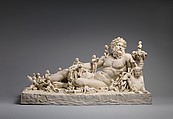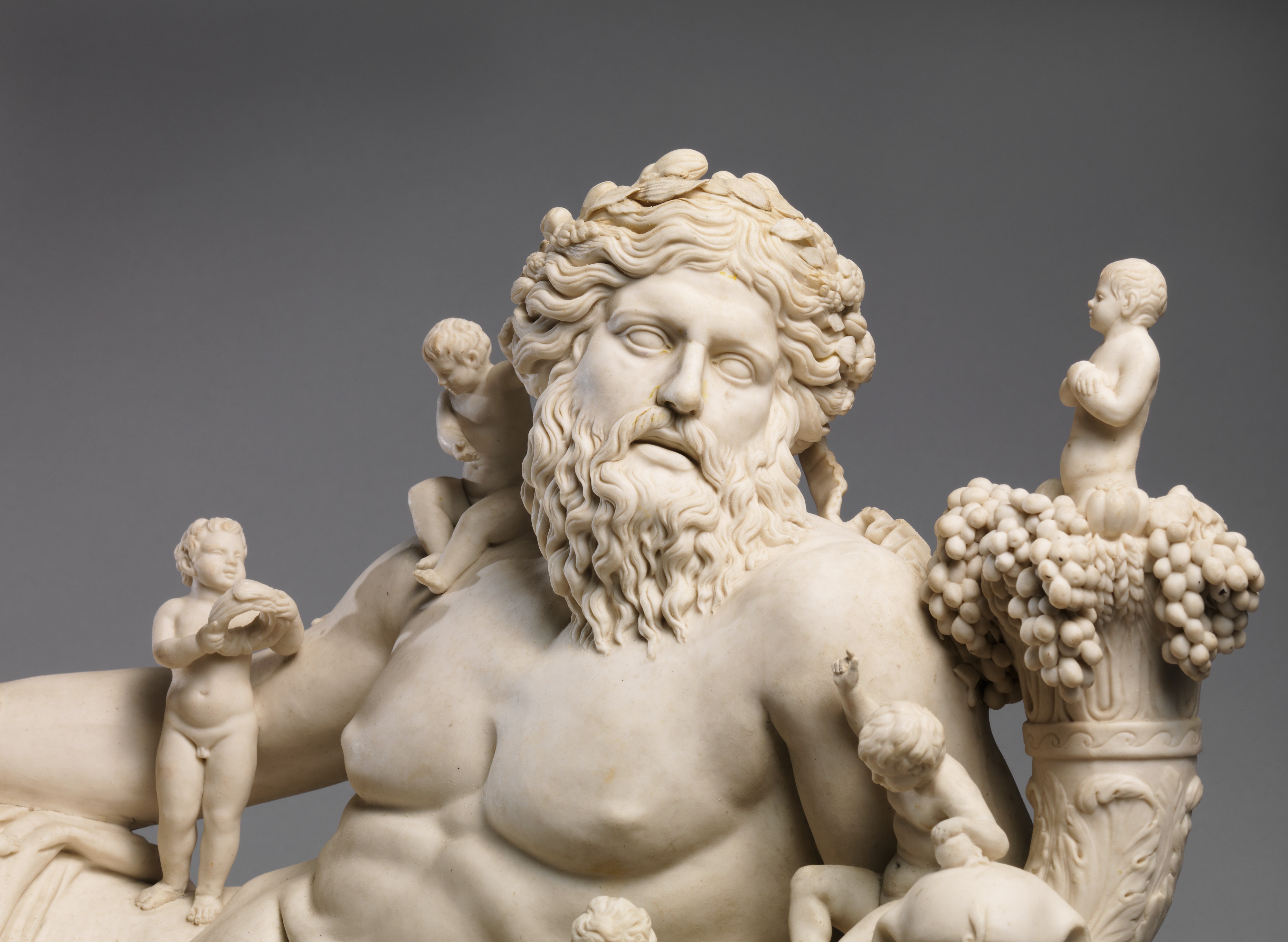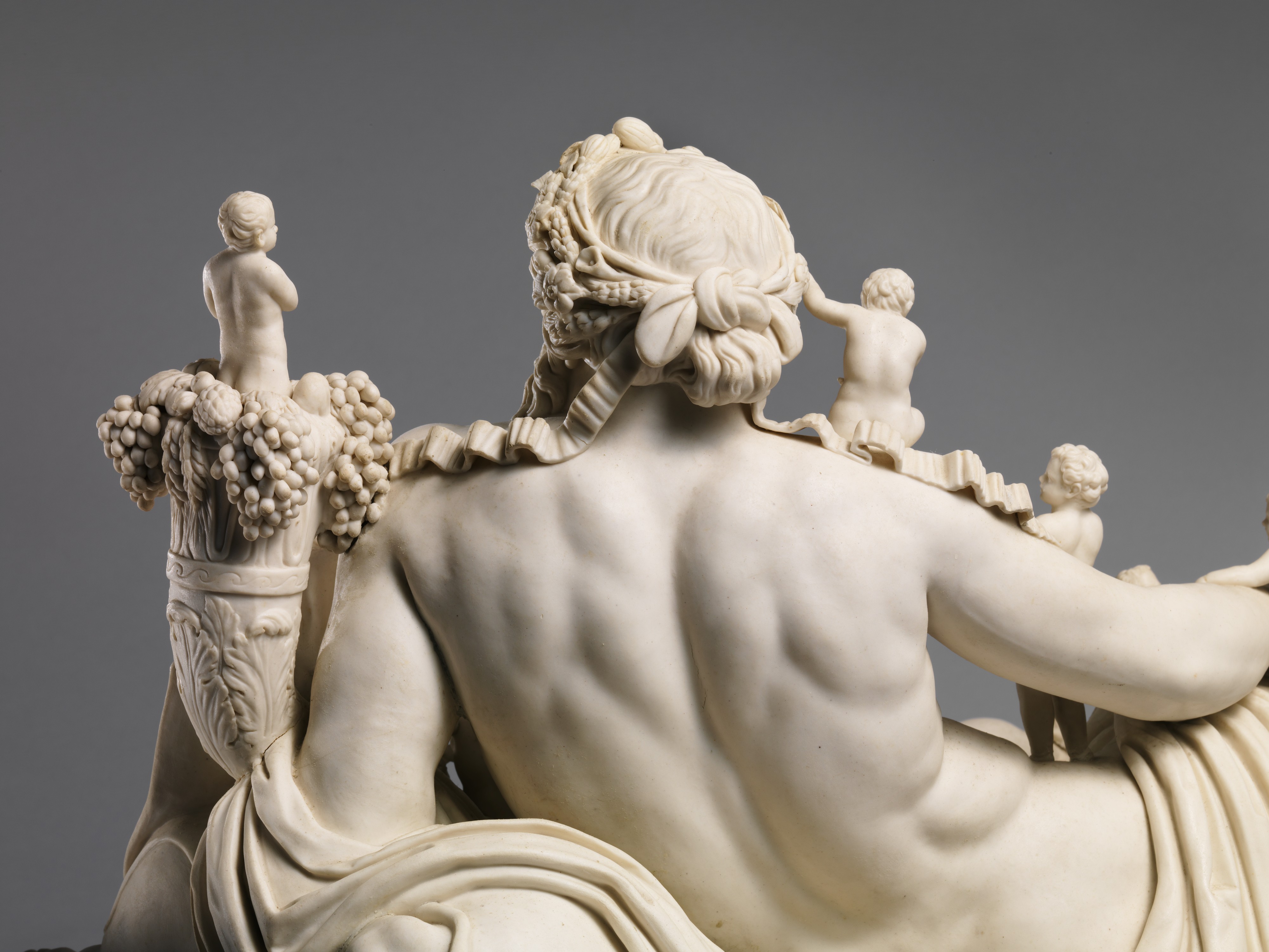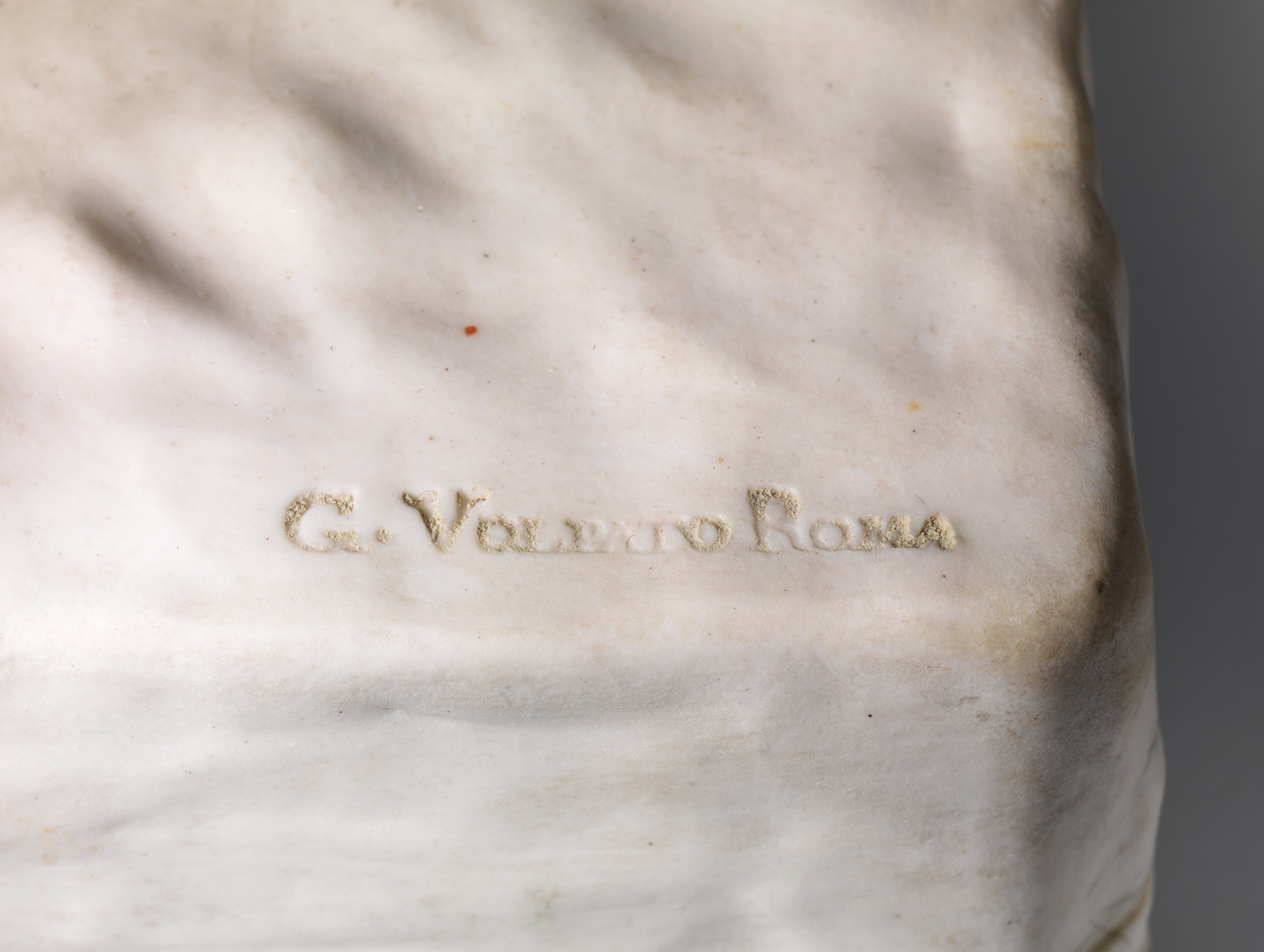Personification of the River Nile
Giovanni Volpato Italian
In 1785 Giovanni Volpato established a manufactory in Rome for the production of biscuit-porcelain sculpture. This group personifying the river Nile was the most ambitious work made at Volpato's factory, as well as the most expensive, as shown by a surviving price list. Most of the sculptural groups made under Volpato's supervision were reproductions of antique marbles, the biscuit- porcelain medium being ideally suited to this purpose. The River Nile is a reduction of a colossal Roman marble at the Vatican, much admired in Volpato's time, and is remarkably faithful to the marble original; only the base has been simplified, as was required by the change in scale. The composition is an allegory of fecundity. A cornucopia is placed prominently near the reclining Nile, and the sixteen small children who cavort on and about the figure of the river symbolize the sixteen units of measurement, known as cubits, by which the river rose annually, fertilizing the surrounding areas. The complexity of the composition, due in large part to the incorporation of the children, accounted for the high price of the biscuit group, of which this is the only known example.
Due to rights restrictions, this image cannot be enlarged, viewed at full screen, or downloaded.
This artwork is meant to be viewed from right to left. Scroll left to view more.








